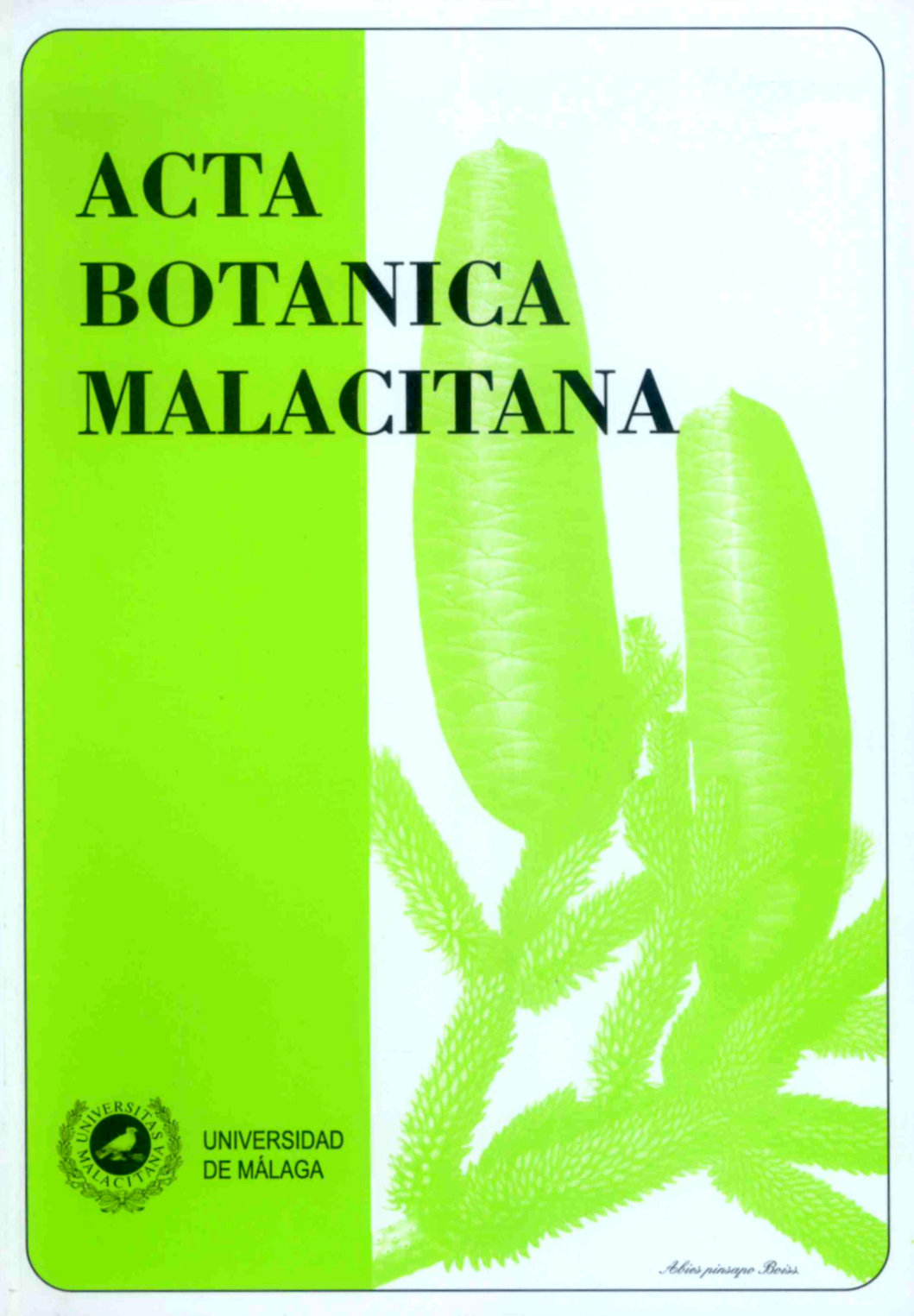Consideraciones sobre el ge?nero Jasonia (Compositae, Inuleae). Sistema?tica y usos.
DOI:
https://doi.org/10.24310/abm.v29i0.7232Abstract
RESUMEN. Consideraciones sobre el género Jasonia (Compositae, Inuleae). Sistemática y usos. En este trabajo se estudia el género Jasonia en la Península Ibérica, en la que viven J. tuberosa y J. glutinosa. Además se aportan datos sobre las especies insulares mediterráneas y del norte de África. El género Chiliadenus se incluye razonadamente en la sinonimia de Jasonia. Se confirma la validez nomenclatural de J. glutinosa y se cita correctamente su basiónimo. Además se aportan datos nomenclaturales y morfológicos y se incluyen dos mapas de distribución de las especies. Se proponen dos nuevas combinaciones: J. bocconei y J. lopadusanus. Dada la importancia del té de roca (J. glutinosa) como planta medicinal de extendido uso popular en España, se detallan sus usos y la distribución de los mismos.
Palabras clave. Jasonia, región Mediterránea, Península Ibérica, sistemática, nomenclatura, usos.
ABSTRACT. Notes on the genus Jasonia (Compositae, Inuleae). Taxonomy and uses. This paper studies the genus Jasonia in the Iberian Peninsula, where both J. tuberosa and J. glutinosa live. Data of the other Mediterranean and North African species are given. After a taxonomic discussion, the genus Chiliadenus is considered as a synonymous of Jasonia. The nomenclatural validity of J. glutinosa is discussed and its correct basyonym is mentioned. Nomenclatural and morphological data, as well as distribution area maps are included: J. bocconei and J. lopadusanus. Two new combinations are proposed. Due to the relevance of “té de roca” (J. glutinosa) as a popular medicinal plant widely used in Spain, the uses and their distribution are given.
Key words. Jasonia, Mediterranean Region, Iberian Peninsula, systematics, nomenclature, uses.
Downloads
Metrics
Downloads
Published
How to Cite
Issue
Section
License
All information related to the licensing of published works in Acta Botanica Malacitana and copyright can be found in our Editorial Policy.







1.png)
